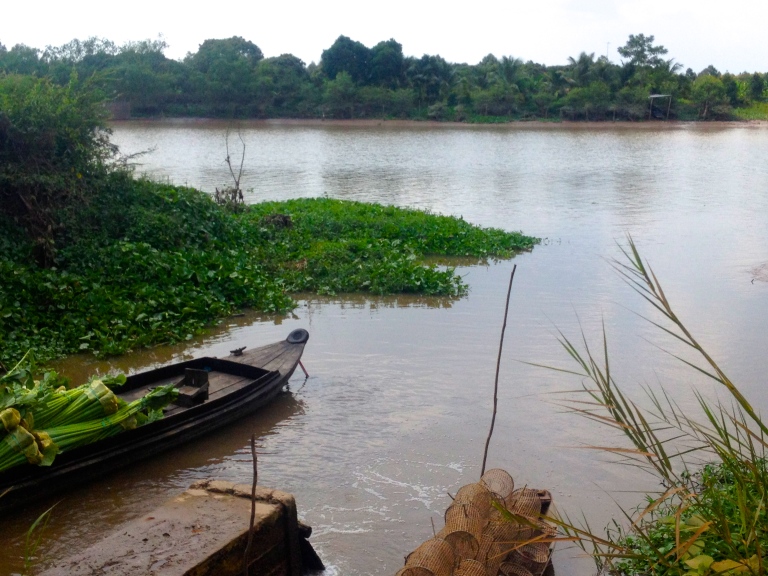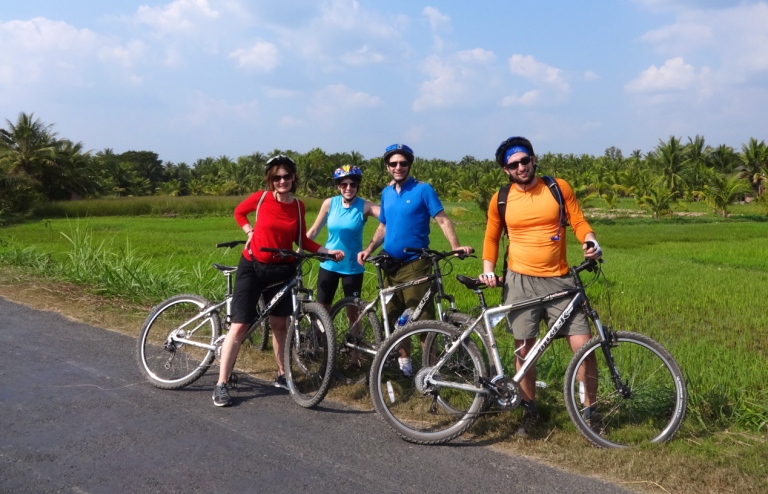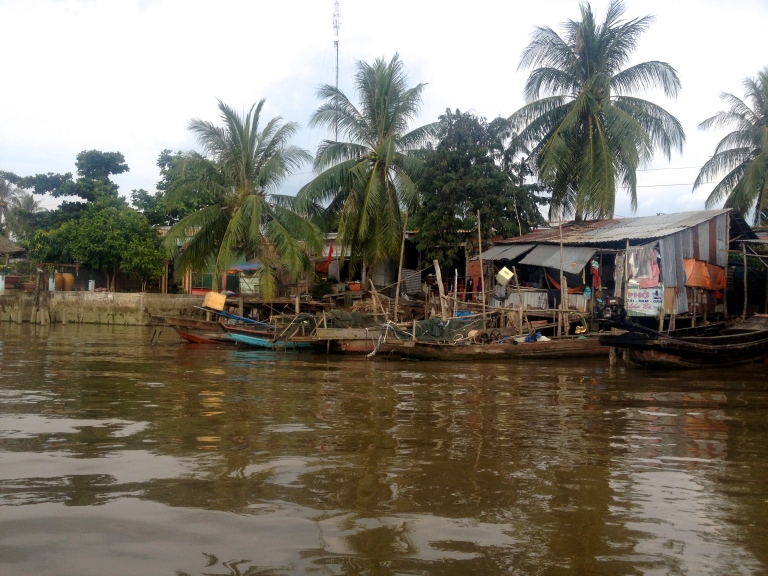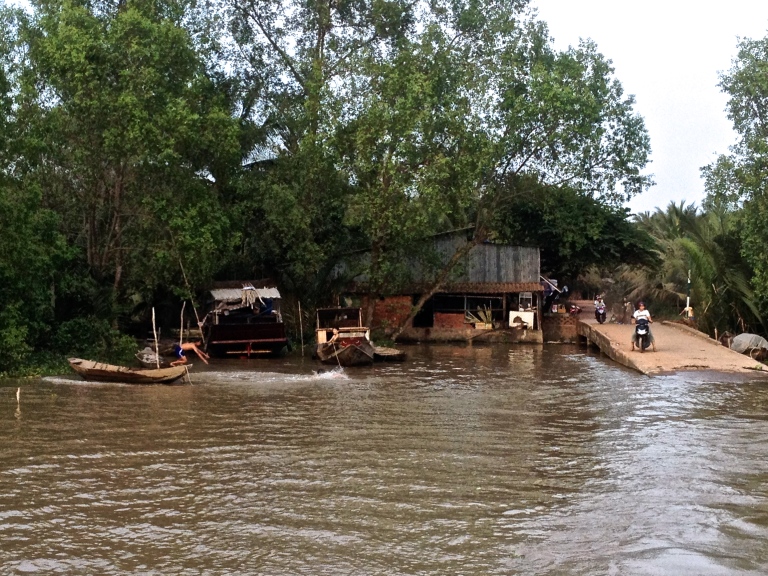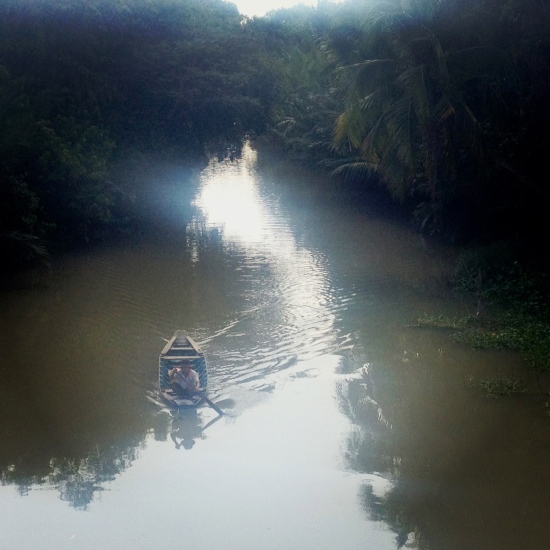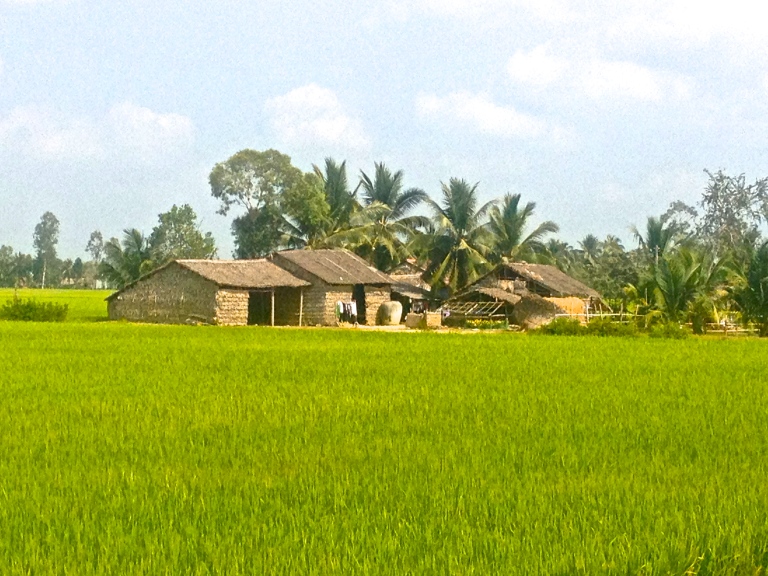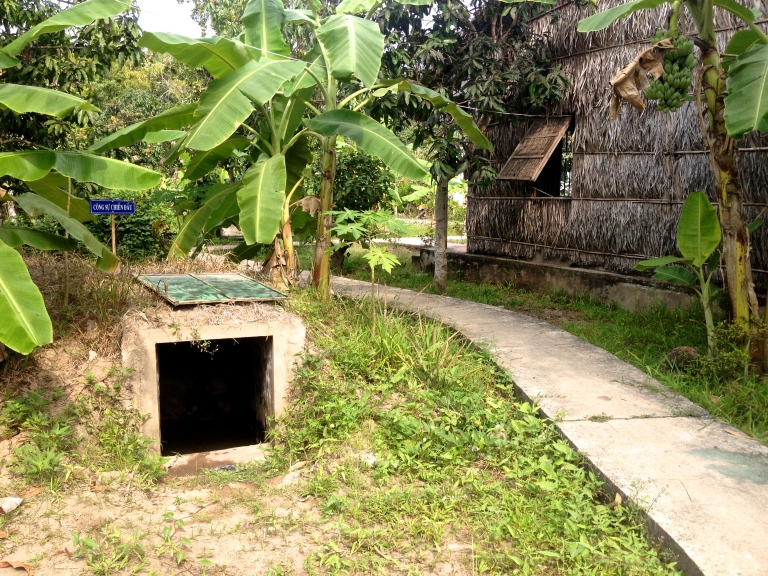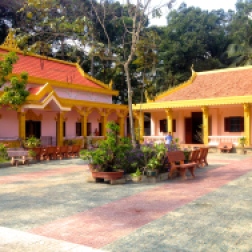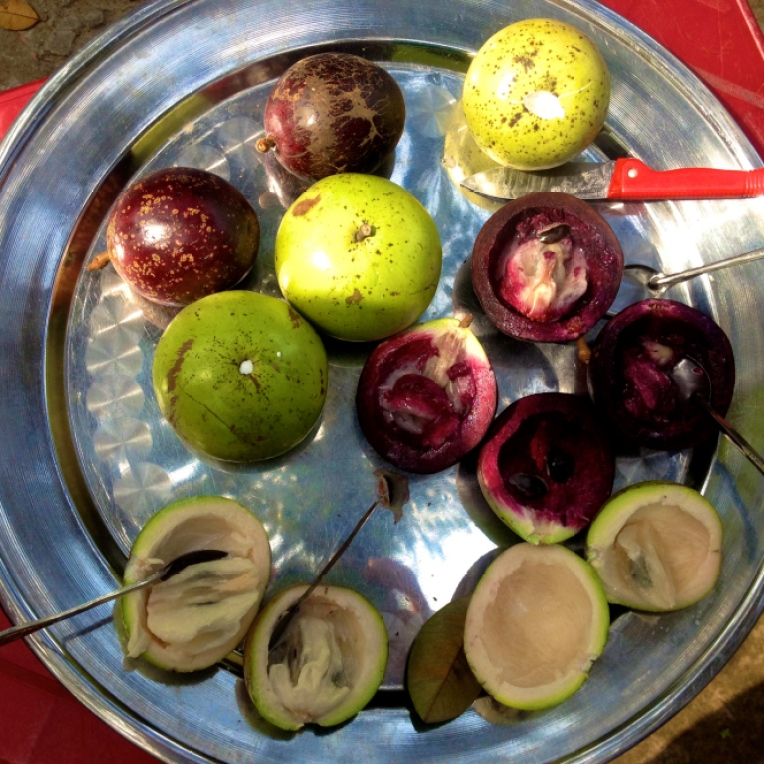When planning a vacation, a bike trip is usually not the first thing that pops into one’s mind, especially if you’re in need of a relaxing getaway. However, if you’re looking for an active trip away from mainstream destinations, a bike trip may be for you.
Before moving to Asia, a bike trip never came to mind when thinking of how I’d spend a vacation, despite seeing my parents go on many bike trips throughout my life. But, when they mentioned partaking on one in Vietnam, I thought it may be a good opportunity to try out this “biking thing”.
It turned out that the bike trip encompassed everything that I enjoy about traveling. It provided the opportunity to see places off the beaten path and away from mainstream tourist spots, to be immersed into the locals’ way of life and to discover uncharted sites that are otherwise inaccessible. Throughout our four days of biking, we only saw one other small group of Westerners, who were also on a bike trip.
Now, I know what you’re thinking: how difficult are these bike trips? It’s usually the first question that I get – and it was the first question I asked when my bike-enthusiast parents piqued my interest in it. The answer is that you can choose the difficulty level based on trip location, or if you do a private trip, you can tailor the trip and amount of biking to your liking.
The best part about biking in Asia though, is how truly exhilarating it is. Unlike the States where most bike trips are polished and refined, bike trips in Southeast Asia offer a very different, rugged experience. You’ll bike on dirt roads through jungles, stay in rustic hotels in bare villages, try a host of native, unique foods and stop at cultural landmarks whether it be temples, schools or markets. The focus of the trip is just as much on showing and immersing you into the culture of the place, as is the biking itself.
I’ve done two bike trips since moving to Asia: one in Southern Vietnam and the other in Northern Thailand. Both offered adventure, a taste of local life and some of the most exquisite landscapes imaginable, however, the terrain, atmosphere and scenery differed vastly. For this blog, I’ll begin with Vietnam.
Overall experience: If you’re looking to do a bike trip that provides an array of scenery mixed with cultural excursions, biking through Southern Vietnam provides just that. Unlike Northern Thailand, the scenery of Southern Vietnam is immensely versatile, ranging from rice paddies to rustic villages to an array of different scenes along the Mekong Delta. Along our ride we were transported into a different atmosphere and aesthetic every few hours.
The biking itself is relatively easy, as the land is completely flat and you’ll get to bike on a host of trails from dirt, rocky tracks to paved roads along the Mekong Delta. However, what makes biking difficult is that the motorbikes, the main means of transport in Vietnam, share some of the same trails as you and are driving at 30-40mph. On small roads where you have to bike single-file, it can be overwhelming to be surrounded by motorbikes, knowing that if you make one small mistake, you could very well be hit. It didn’t take away from the biking experience but it did make us very aware and ‘on guard’ especially when biking through the villages.
Villages: We began the trip in Cai Be, a rural town in the Mekong Delta, biking to Vinh Long then to Tra Vinh and ending in Can Tho, the fourth largest city in Vietnam.
We biked through many villages throughout the trip, meeting locals and seeing their way of life. While the lifestyle was simplistic and bare, without possessions, the atmosphere was content and joyous. There wasn’t one time where we passed a villager and they didn’t greet us with a smile and hello; some even invited us into their homes for a drink. When kids would get a glimpse of us, they would instantly sprint towards our bikes, excitedly waving and screaming ‘hi!’ in loud pitched squeals – eager to hear a ‘hi!’ in return.
What was most striking was seeing the village homes, as they were made from bamboo or planks of wood and built into the jungles – none of which had electricity or running water. Many of the homes were open-faced, allowing us to nosily peak inside as we rode, seeing families playing cards or preparing lunch. In some villages, the homes were painted in the most vibrant colors – turquoise, pink, bright orange – it was a peculiar sight to see these vivid yet sparse homes juxtaposed among the dense jungles and tropical vegetation of the Mekong Delta.
Mekong Delta: Biking along the Mekong Delta was another prominent landscape throughout the trip, as our bike trail followed along the path of the river.
The river is the heart and soul of Southern Vietnam, illustrating the present culture of the region. Today, the Mekong is not only used by boaters and for transport, but homes, restaurants and markets float on the bustling river. You’ll see villagers washing garments and kitchenware in it while groups of teenagers ride on motorbikes alongside it.
The floating markets though are arguably the most well-known feature of the Mekong. There are hundreds throughout the region with the most popular being in Can Tho, Cai Be and Vinh Long. On our trip, we stopped by the Phong Dien market in Can Tho, known for having rowboats, as opposed to motorized craft, and few tourists. The markets themselves are just like land markets, but all goods are sold on boats. You’ll see dozens of farmers in rowboats filled with barrels of fresh vegetables, fruits, produce or other goods while traders approach them to make a deal.
While I enjoyed the uniqueness of the markets, what was most striking about the Mekong Delta was the contrasting river scenes. Along some stretches, you’d see a single fishing boat tranquilly floating down the river without anyone else in sight, whereas in the more populated areas, the river would be dominated by rustic ferry boats used to transport motorbikes across the river. One of the highlights of our trip was regularly hopping on these packed ferries to cross the waterways, despite the puzzled looks on the locals’ faces seeing a group of Westerners with our measly mountain bikes squished in between their guzzling motorbikes.
Besides the villages and river, we also biked through rice paddies, orchards and swamplands, getting to see the beautiful versatility of Southern Vietnam.
Excursions: What made the bike trip most unique though was the diversity of daily experiences, as throughout the day we’d have breaks to stop at cultural institutions or landmarks in whichever town we were in. One of the most memorable stops was to see remaining Viet Cong bunkers, which our guide eagerly pointed out to us as an avid connoisseur of the war and loyal patron of the South, making snikery comments about the North throughout our trip.
Other memorable stops included a visit to the Cao Dai Holy See Temple in Tây Ninh, which is the town where the religion Caodaism originated less than a century ago. In Tra Vinh, we stopped at a prominent Khmer pagoda and school, seeing Khmer monks immersed in their studies. We also stopped at a market in Vinh Long, trying a local specialty: freshly pressed sugar cane juice.

Lunch of course was also always a highlight, as we’d eat in simple, family-run shops or outdoor markets, trying local foods that ranged from various types of spring rolls to pho to milk fruit.
If you couldn’t tell, biking through Southern Vietnam offered some of the most unique experiences, whether it was biking alongside motorbikes in local villages, learning about new religions like Caodism or falling into a pit of mud as I clumsily got off my bike. If you have a week or even a few days of vacation and are looking to fully maximize your trip, consider a bike trip in Southeast Asia. I can’t speak highly enough about it!

